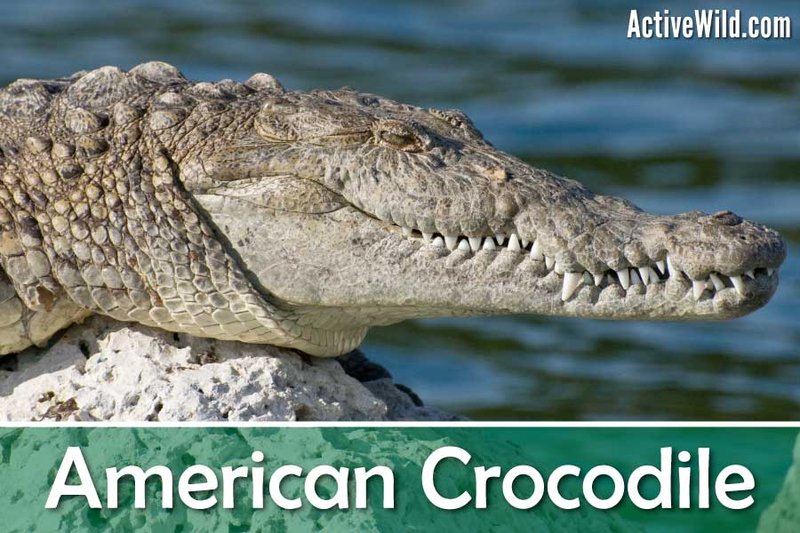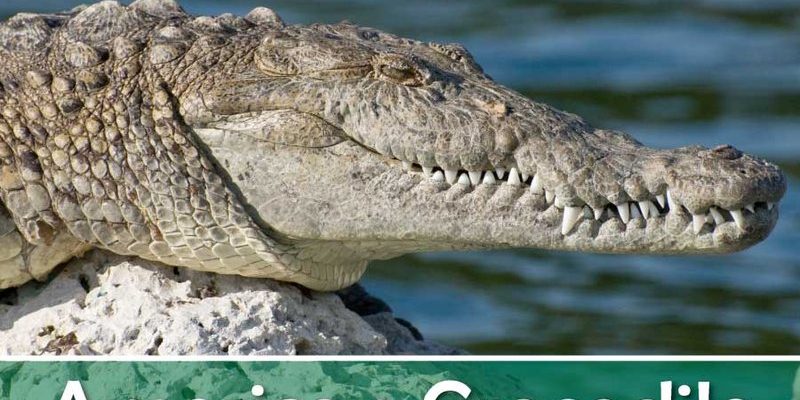
So, why is the American crocodile endangered? Well, it’s not just one factor causing them trouble. Habitat loss, pollution, and hunting have all taken a toll. But there’s good news! Conservation efforts are underway to protect these fascinating animals and their environments. In this article, we’ll dive deep into the status of the American crocodile, what’s putting them at risk, and how conservationists are stepping up to help.
Understanding the American Crocodile
The American crocodile (*Crocodylus acutus*) is not just any crocodile; it’s a unique and impressive creature. Found mainly in tropical regions like Florida, the Caribbean, and parts of Central America, these crocodiles are easily recognized by their long snouts and pale yellow-green skin. Just picture a large, formidable animal lounging by a river, perfectly adapted to its environment.
Crocodiles generally prefer brackish waters, which are a mix of freshwater and saltwater, making them somewhat different from their alligator cousins. They are known for their powerful jaws and impressive swimming abilities, which allow them to thrive in their habitats. Unfortunately, though, the very ecosystems that support them are rapidly changing due to human activity.
Why Is the American Crocodile Endangered?
You might be wondering what specific factors contribute to the American crocodile’s endangered status. Here’s a closer look:
- Habitat Loss: As cities expand and agriculture takes over, the natural habitats of these crocodiles are destroyed. Wetlands are drained, and waters are diverted, making it tough for crocodiles to find suitable places to live and breed.
- Pollution: Water pollution is a significant issue, affecting the health of crocodiles. Contaminated water can lead to disease and reproductive issues, putting their future at risk.
- Hunting and Poaching: Historically, American crocodiles were hunted for their skins and meat. Though hunting is now regulated in many places, illegal poaching still occurs, further threatening their populations.
Each of these factors contributes to a declining population. With fewer crocodiles in the wild, the genetic diversity of the species also diminishes, making it even harder for them to recover.
Current Population and Threat Status
The *IUCN Red List* classifies the American crocodile as “Vulnerable,” which means they face a high risk of extinction in the wild. While some populations—like those in Florida—have shown signs of recovery thanks to conservation efforts, others are still in decline.
In places like Cuba and parts of Central America, populations are small and fragmented. It’s important to remember that populations are not the same everywhere; recovery efforts can vary widely based on local conditions and challenges.
Environmental changes, such as rising sea levels and climate change, are also complicating matters. As their habitats shift, crocodiles might struggle to adapt.
Conservation Efforts to Protect the American Crocodile
So, how are conservationists working to protect the American crocodile? The good news is that efforts are already in place and showing results. Here are some key strategies:
- Protected Areas: Establishing marine reserves and national parks helps provide safe spaces for crocodiles to live and reproduce.
- Legal Protection: Laws restricting hunting and trade in crocodile products are crucial. These regulations help ensure that crocodiles are not exploited, allowing populations to recover over time.
- Habitat Restoration: Conservation groups work on restoring wetlands and improving water quality, making it easier for crocs to thrive.
- Research and Monitoring: Ongoing scientific research helps track crocodile populations and understand their needs. This data drives effective conservation strategies.
These efforts are vital for the survival of the species and demonstrate how human actions can positively impact wildlife.
Community Involvement in Conservation
You might think that saving the American crocodile is a job for scientists and environmentalists alone, but that’s not the case! Local communities play a significant role in conservation too. Here’s how:
- Education and Awareness: Local schools and organizations often engage in educational programs that teach people about the importance of protecting crocodiles and their habitats. The more people know, the more they can help.
- Eco-Tourism: Some communities benefit economically from eco-tourism related to crocodile watching. This encourages locals to protect these animals instead of harming them, as they can earn a living from them.
- Community-Led Initiatives: In some regions, local residents take the lead in habitat restoration and conservation projects, showing that a united effort can create a significant impact.
When communities are involved, conservation becomes much more effective. People who understand the value of their local wildlife are more likely to protect it.
Success Stories and Hope for the Future
It’s easy to get disheartened when we talk about endangered species, but there are also plenty of success stories to celebrate. Take Florida, for example; thanks to concerted conservation efforts, the American crocodile population there has seen a notable increase.
Some communities have even adopted innovative strategies, like relocation programs that safely move crocodiles from conflict areas to safer habitats. These initiatives are great examples of how human ingenuity can work alongside nature for a brighter future.
With continued effort, education, and awareness, we can all help secure a future for the American crocodile. They’ve been around for millions of years; it would be a shame to let them slip away.
How You Can Help
Feeling inspired? There are plenty of ways you can contribute to the conservation of American crocodiles and their habitats:
- Support Wildlife Organizations: Donations to reputable conservation groups can help fund research and habitat restoration projects.
- Get Involved: Volunteer for local conservation efforts or participate in clean-up days at local wetlands and rivers.
- Spread the Word: Educate friends and family about the importance of protecting crocodiles and their ecosystems. Every conversation counts!
Your actions, no matter how small, can create a ripple effect that contributes to the conservation of the American crocodile.
In closing, the American crocodile’s plight reminds us that every species plays a role in the delicate balance of our ecosystems. As we continue to understand their struggles, we also learn about our responsibility to protect them. With dedicated conservation efforts and community involvement, there’s hope. Together, we can ensure that these magnificent reptiles don’t just survive but thrive for generations to come. Let’s keep the conversation going, because every step counts in this journey to save the American crocodile!

